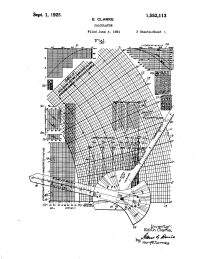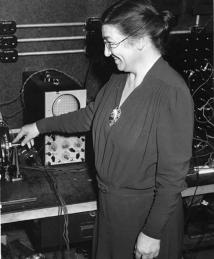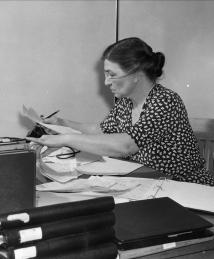Edith Clarke
Pioneering electrical engineer Edith Clarke invented a graphical calculator that greatly simplified the calculations necessary to determine the electrical characteristics of long electrical transmission lines. She was known for developing mathematical methods that simplified and reduced the work of electrical engineers.
Born in Howard County, Maryland, in 1883, Clarke was one of nine children. After she lost both her parents at just 18 years old, she used her inheritance to enroll at Vassar College, where she studied mathematics and astronomy.
Clarke graduated from Vassar in 1908. Following her education, she taught mathematics and physics at a private school in San Francisco, and at Marshall College in West Virginia. She returned to school in 1911, enrolling at the University of Wisconsin-Madison to study civil engineering, a field she had always wanted to pursue.
While working toward her master’s degree, she took a summer job at AT&T Inc., where she worked as a “computer,” a human calculator who supported engineers as they built the first transcontinental phone line. At one point, she assisted National Inventors Hall of Fame® Inductee George Campbell as she learned about transmission lines and electrical circuits.
Clarke left the University of Wisconsin-Madison to continue her graduate studies at the Massachusetts Institute of Technology (MIT). In 1919, she became the first woman to earn a master’s degree in electrical engineering.
Despite her accomplishments in academia, Clarke had difficulty finding work following her graduation from MIT, so she returned to working as a supervisor of computers, this time for General Electric Co. (GE) in its Turbine Engineering Department. While at GE, she invented a graphical calculator – the Clarke Calculator – that greatly simplified and reduced the work of electrical engineers as they solved electric power transmission line problems.
Clarke’s invention could solve problems that involved electric current, voltage and impedance in power line transmissions, and it could solve equations with hyperbolic functions 10 times faster than other methods at the time. She received her first patent for her graphical calculator in 1925. According to the U.S. Department of Energy, Clarke’s remarkable ability to examine the power grid contributed to the development of “smart grid” technology.
Reflecting on the success of her invention despite limited opportunities for women in the field of engineering, she said, “There is no demand for women engineers, as such, as there are for women doctors; but there’s always a demand for anyone who can do a good piece of work.”
While on a leave of absence from GE, in 1921, Clarke taught physics at the Constantinople Women’s College in Turkey. At that time, she was not permitted to do engineering work and was kept at a lower professional status, earning a lower salary than men in the same position. However, when she returned to the U.S. in 1922, GE offered her a position as a salaried electrical engineer in its Central Station Engineering Department. Clarke accepted the offer, becoming the first woman to be professionally employed as an electrical engineer in the country.
Throughout her career, Clarke often was the first in her endeavors. In 1926, she became the first woman to present a paper at the annual meeting of the American Institute of Electrical Engineers (AIEE), which later became the Institute of Electrical and Electronics Engineers (IEEE), and in 1948, she was among the first women to be named a fellow under the organization. Clarke also applied her knowledge of electrical engineering toward the design and construction of hydroelectric dams in the West.
Between 1923 and 1945, Clarke published 18 technical papers, including two award-winning ones. In 1945, she retired from GE and bought a farm in Maryland, but two years later, she became the first woman professor of electrical engineering in the U.S. when she joined the faculty of the University of Texas at Austin. Clarke taught for 10 years, until her retirement in 1957. In recognition of her impact, she received the Society of Women Engineers’ Achievement Award in 1954.



